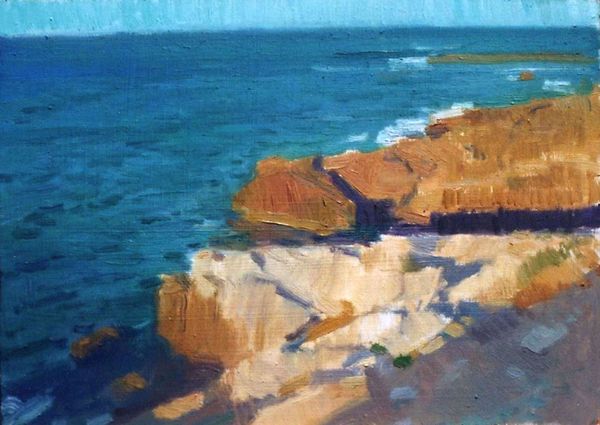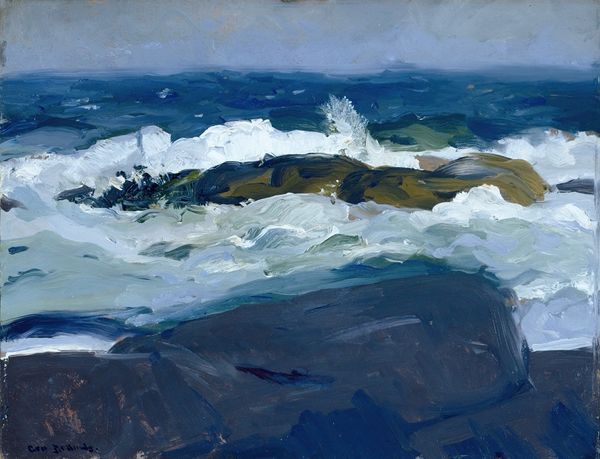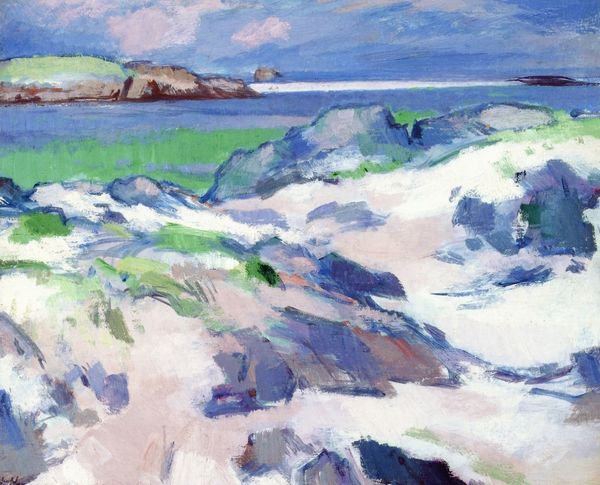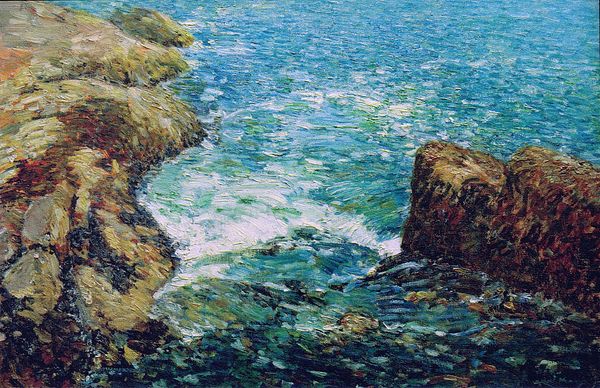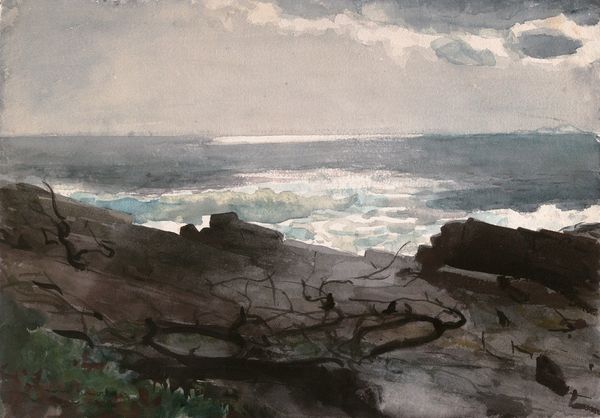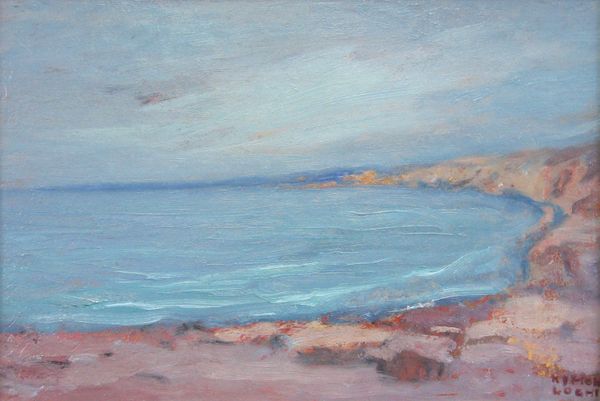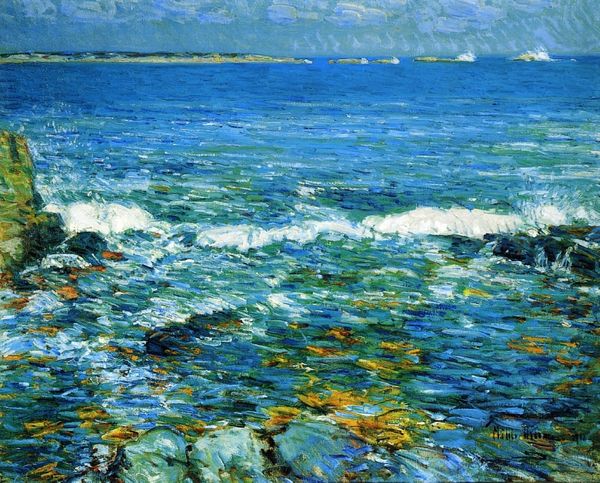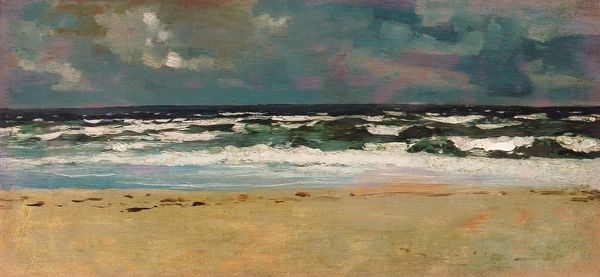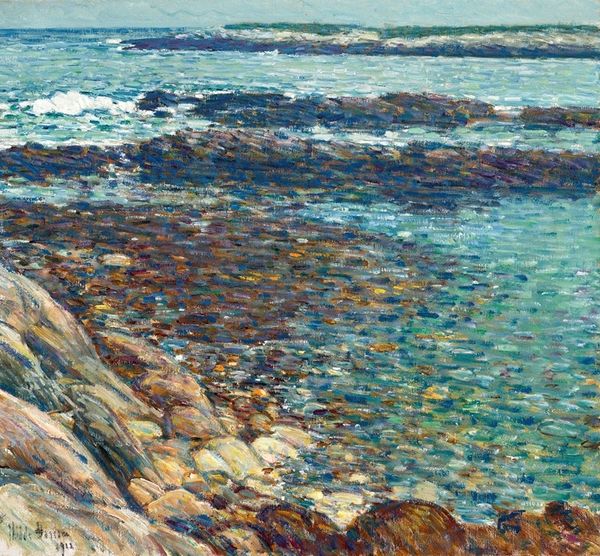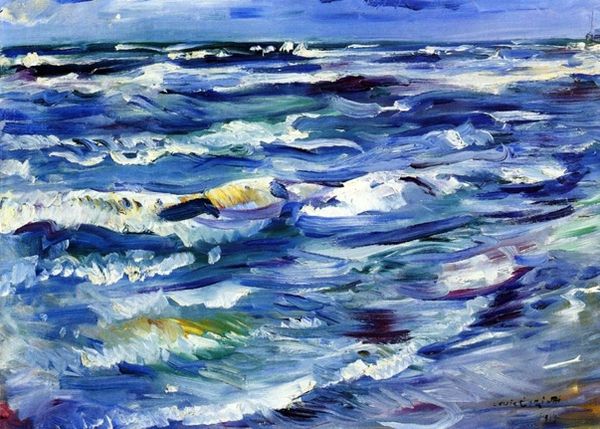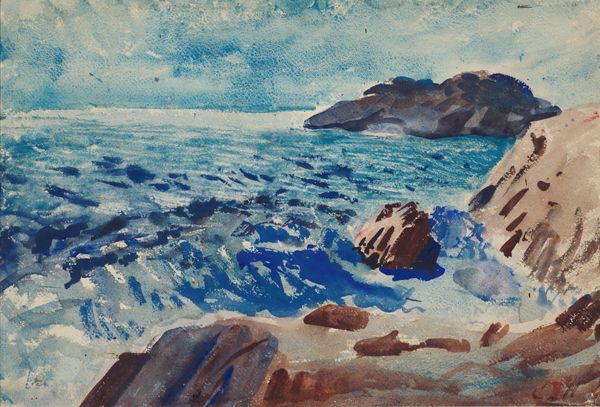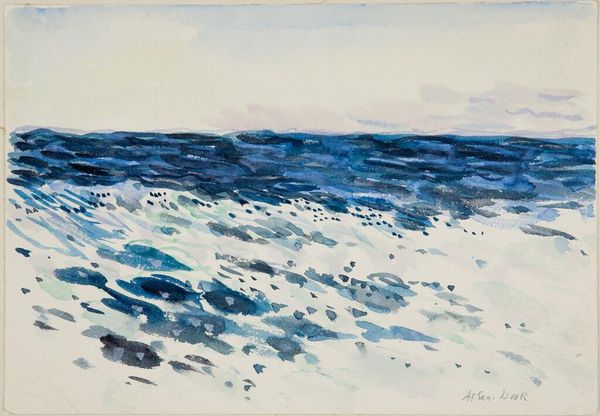
Dimensions: 54 x 73 cm
Copyright: Alejandro Cabeza,Fair Use
Curator: Looking at "Marine" by Alejandro Cabeza, completed in 2001, what strikes you first? It is an oil painting capturing a coastal scene. Editor: The viscosity! You can practically feel the thick, tactile application of the oil paint. There's a real rawness, an honesty in the process that speaks to me immediately. I wonder, where did he source the pigments? Curator: The composition is intriguing, isn't it? Note the strong horizontal lines—the horizon dividing the sky, sea, and then the jagged rocks in the foreground. Cabeza employs a limited palette, focusing on blues, greens, and ochres to establish spatial depth and a contemplative mood. Semiotically, these blues evoke serenity and vastness, key to understanding seascapes. Editor: But think about the labor involved. Each stroke a deliberate act of translation. The 'en plein air' tag intrigues me as well, because working outside always connects a piece inextricably to a specific place and moment of embodied labor. How does that process inform our reception of it, especially when considering the weight of maritime labor throughout history? Curator: That tension between observation and material presence makes it work. It's not just a visual record; it's the feeling of the air, the light—transmuted onto canvas. There’s a sort of material authenticity. Editor: Authenticity is one way to frame it; I would be keen to consider the economics and access to land when an artist does plain-air painting - there are complex socio-economic conditions attached. But back to "Marine," the layering suggests a longer engagement; perhaps days returning to the same spot to capture nuances in real time. Curator: Precisely, capturing time itself becomes part of the subject matter. The painting uses artifice to speak to the real! Well, reflecting on the structure and texture here reveals how a traditional genre—seascape painting—can still evoke a potent and direct response from a viewer. Editor: Yes, it's fascinating how the tangible process elevates it. Looking at the layers and its making encourages viewers to question what that painting itself wants us to see or touch, and even the place and economy that made it.
Comments
No comments
Be the first to comment and join the conversation on the ultimate creative platform.

